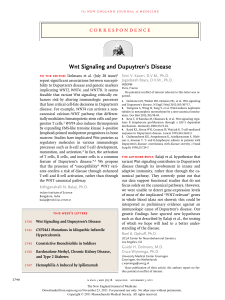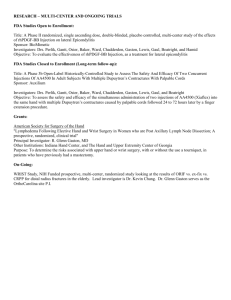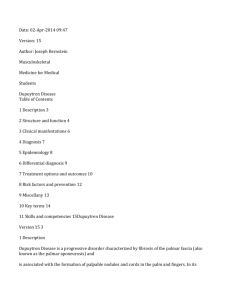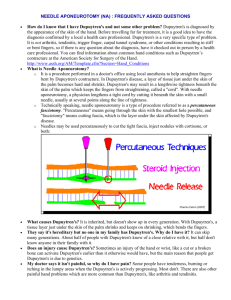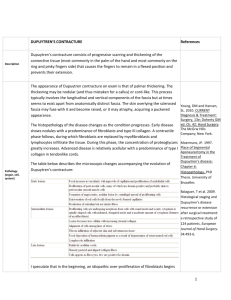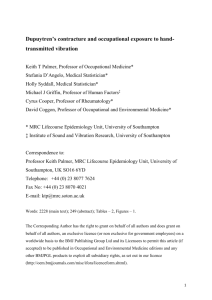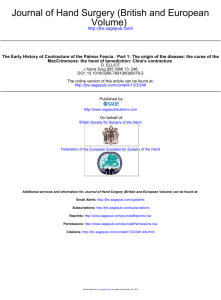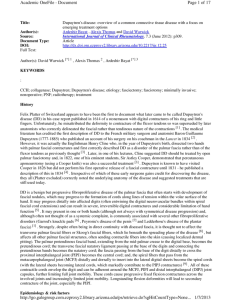Flares from trauma.
advertisement
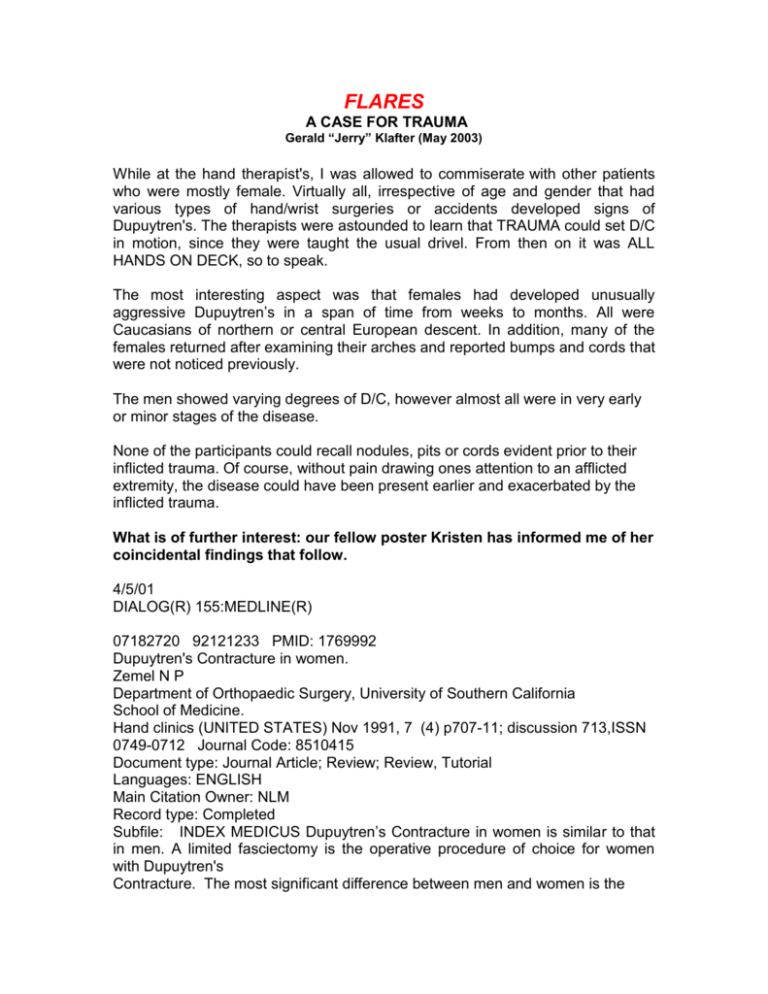
FLARES A CASE FOR TRAUMA Gerald “Jerry” Klafter (May 2003) While at the hand therapist's, I was allowed to commiserate with other patients who were mostly female. Virtually all, irrespective of age and gender that had various types of hand/wrist surgeries or accidents developed signs of Dupuytren's. The therapists were astounded to learn that TRAUMA could set D/C in motion, since they were taught the usual drivel. From then on it was ALL HANDS ON DECK, so to speak. The most interesting aspect was that females had developed unusually aggressive Dupuytren’s in a span of time from weeks to months. All were Caucasians of northern or central European descent. In addition, many of the females returned after examining their arches and reported bumps and cords that were not noticed previously. The men showed varying degrees of D/C, however almost all were in very early or minor stages of the disease. None of the participants could recall nodules, pits or cords evident prior to their inflicted trauma. Of course, without pain drawing ones attention to an afflicted extremity, the disease could have been present earlier and exacerbated by the inflicted trauma. What is of further interest: our fellow poster Kristen has informed me of her coincidental findings that follow. 4/5/01 DIALOG(R) 155:MEDLINE(R) 07182720 92121233 PMID: 1769992 Dupuytren's Contracture in women. Zemel N P Department of Orthopaedic Surgery, University of Southern California School of Medicine. Hand clinics (UNITED STATES) Nov 1991, 7 (4) p707-11; discussion 713,ISSN 0749-0712 Journal Code: 8510415 Document type: Journal Article; Review; Review, Tutorial Languages: ENGLISH Main Citation Owner: NLM Record type: Completed Subfile: INDEX MEDICUS Dupuytren’s Contracture in women is similar to that in men. A limited fasciectomy is the operative procedure of choice for women with Dupuytren's Contracture. The most significant difference between men and women is the higher incidence of a flare reaction in women following the operation. This must be considered when contemplating such procedures because the flare is associated with a greater risk of residual joint stiffness. (32 Refs.) Tags: Female; Human Descriptors: *Dupuytren's Contracture--surgery--SU; *Postoperative Complications; Adult; Fascia--surgery--SU; Hand--surgery--SU; Middle Age; Recurrence; Surgical Procedures, Operative--methods--MT Record Date Created: 19920226 4/5/02 DIALOG(R) File 155:MEDLINE(R) 05660261 88088573 PMID: 3693825 Dupuytren's disease in women: evaluation of long-term results after operation. Zemel N P; Balcomb T V; Stark H H; Ashworth C R; Rickard T A; Anderson D R; Hull D B Department of Orthopaedic Surgery, University of Southern California School of Medicine, Los Angeles. Journal of hand surgery (UNITED STATES) Nov 1987, 12 (6) p1012-6, ISSN 0363-5023 Journal Code: 7609631 Document type: Journal Article Languages: ENGLISH Main Citation Owner: NLM Record type: Completed Subfile: INDEX MEDICUS A study of the long-term results after operation on 66 women (83 hands) with Dupuytren’s disease showed that women are twice as likely as men to have a postoperative flare reaction. Why a flare reaction develops is uncertain. In this study, patients who had a carpal tunnel release at the time of operation for treatment of Dupuytren's disease or those who had an extensive fasciectomy, as opposed to removal of only the contracted tissue, were more apt to have a flare reaction. In addition, after operation, moderate or severe loss of finger flexion occurred in 35% of hands without a flare reaction and in 76% of those who had a flare reaction. This suggests that women having an operation for treatment of Dupuytren's disease are apt to have a worse result than men. Tags: Female: Human DESCRIPTORS: *Dupuytren's Contracture--surgery--SU; *Hand Deformities, Acquired--surgery--SU; *Postoperative Complications--etiology--ET; Aged; Fascia--surgery--SU; Finger Joint--surgery--SU; Follow-Up Studies; Metacarpophalangeal Joint--surgery--SU; Middle Age; Risk Factors Record Date Created: 19880204
